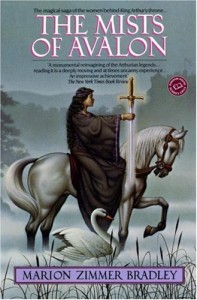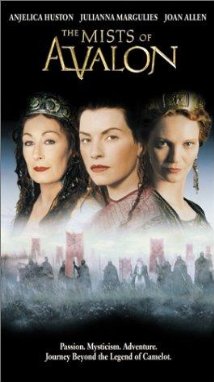by Naomi L. | September 6, 2013 | Flash Fiction, J.C. Wolfe's Writing |
I thought he loved me.
I thought he’d be mine forever.
I thought he’d grow old with me, keep me company, wait every day for me to come home to him.
And then one day, he left me. For the neighbor. Who gave him something better than I ever could…
She bought him the premium food.
Now I only see him over the fence, growing old and plump with her, keeping her company in her yard, waiting every day on her porch for her to come home to him.
And always reminding me of the day I lost him forever.
From that day on, I swore I’d never love a stray cat again.
by Naomi L. | September 4, 2013 | Blog, Creative Writing, Off The Bookshelf |
Since the 9th century, the legend of King Arthur has been a well-known and popular one, spawning several myths and original retellings around the world over hundreds of years. Today, modern adaptations of Arthurian legend are hardly in short supply, from fantasy fiction portraying tales of the Knights of the Round Table to historical nonfiction seeking the truth behind the myths. Among the Arthurian fantasy novels that stand out the most, however, is Marion Zimmer Bradley’s celebrated four-part saga: The Mists of Avalon.

The Mists of Avalon, by Marion Zimmer Bradley
Summary
The novel series was first released in the United States by publisher Alfred A. Knopf in January 1983, for a targeted audience of adults, particularly women of any mature age. The Mists of Avalon tells the story of the rise and fall of King Arthur Pendragon in Britain during the late 5th and early 6th centuries, spanning across generations to narrate events from a little before his birth to sometime after his death. While it still encompasses many of the legend’s fantasy elements so well known today, the saga has a creative twist in that it relates the entire Arthurian legend from a completely different perspective: that of the female characters.
Review
As excited as any admirer of medieval fantasy fiction may be to start on a novel series with an Arthurian theme, the sheer length of this saga may prove daunting enough to warrant it a place on a summer reading list instead. This would likely turn out to be a wise decision, for one quickly discovers that Bradley’s elaborate plot, complex characters, detailed descriptions of medieval Britain, and fantastically original perspective of the Arthurian legend are capable of making the novels nearly impossible to put down for periods longer than are enough for basic necessary tasks, such as eating and sleeping. It’s arguable that enraptured readers would probably reach the end of the book well before the aforementioned list’s respective summer is over, and somehow feeling more conscious of – and respectful toward – the many possible interpretations of the story of King Arthur.
One of the most obvious themes that sets this novel apart from other Arthurian adaptations is feminism. The most widely known versions of these myths portray King Arthur and the Knights of the Round Table as the heroes of the story, while the women remain further toward the background as supporting characters with only a few key roles. In The Mists of Avalon, it’s almost exactly the opposite; Arthur and the other male characters sink into supporting roles, while the women rise up to become the protagonists in this original retelling. Readers are brought into the same world they know so well from the classic tales of King Arthur, yet at the same time, it becomes an entirely different world altogether, proving that vantage point really does make all the difference in the telling of a story.

The Mists of Avalon (2001 TV Movie)
The majority of the narrative is told from the perspective of Arthur’s half-sister: the Avalon priestess Morgaine (known as Morgan le Fay in other Arthurian tales). Many chapters are also narrated from the viewpoints of other important women, among them Arthur’s wife, Queen Gwenhwyfar (the Welsh spelling of ‘Guinevere’); Avalon High Priestess and Lady of the Lake, Viviane; and Arthur and Morgaine’s mother, Igraine. Not only are these characters graced with much longer periods in the center of the narration, but Bradley also does a wonderful job of pulling these women out of their original unidimensional roles and giving them true depth, making them worthy of protagonism. Morgaine is no longer just an evil witch or a simple healer, but a strong druid priestess with good intentions and a tragic destiny. In turn, Gwenhwyfar’s innocent Christian veil is not just a plain matter of faith, but a slow descent into fanaticism brought on by an inferiority complex, her inability to bear children, and her search for salvation from her not-so-innocent infatuation with her husband’s best knight.
Which leads into the next main theme of the book: religion. One of the basic historical aspects of the Arthurian legend is the Christianization of Anglo-Saxon England, at a time when paganism was equally common. Again, a new light is shed on the story, as the conquering over dark pagan ways by Christianity becomes more of a struggle of rising tension and intolerance of the increasingly unstable balance between religions. The matriarchal society of Avalon is cast onto the defensive side against the overbearing patriarchal Church, eventually leading into a sequence of events in which Morgaine and the pagans strive to save Avalon and their native religion from disappearing from their country’s history altogether. Obviously, such strong religious implications – as is true of many novels with similar themes, notably Dan Brown’s The Da Vinci Code and Philip Pullman’s His Dark Materials trilogy – tend to spark equally strong criticism from religious groups, likely qualifying this book for a more “tolerant” audience.
Many might argue that it takes a certain kind of reader to enjoy a story like this, which boasts a generous share of heavy mature themes, such as sexuality and political radicalism. In light of such arguments, it may be best to recommend the series to readers deemed mature enough to refrain from dwelling excessively on these superficial themes (key as they are in many parts of the narrative) and truly appreciate the central concept Ms. Bradley intended to portray in her books: a story isn’t necessarily a simple matter of black and white or good and evil, but instead may hold several truths.
Inspiration
I first read this series when I was 14, after my mother gave me the single four-part volume as a Christmas gift. Since immersing myself in the world of Avalon, this saga has inspired me for its unique take on the legend of King Arthur, a story that has always fascinated me for its fantasy themes and insights into Celtic mythology. It was interesting to read this classic tale from the perspective of the women, and I quickly became entranced by the core theme of feminism present throughout The Mists of Avalon. Looking back, I’m glad my mom considered me mature enough to read the novels during my adolescence, for they introduced me to major political and religious topics during a key stage in my development as an independent thinker, and have thus become a great inspiration for the subtexts and themes that I like to write into some of my own stories.
The Mists of Avalon is, in my opinion, a classic work of art. Whether you’re an Arthurian enthusiast, a feminist, an intellectual with a fascination for religious debate, or simply a fan of well-written fantasy fiction, you will most likely enjoy this book. And if you happen to fit into every one of the above categories – as this writer likes to think she does – you will certainly devour it in no time, and still be left hungry for more.
by Naomi L. | September 2, 2013 | Blog, Word of the Week |
Word: prosaic
Pronunciation: proh-ZAY-ik
Part of Speech: adjective
Definition:
- having the style or diction of prose; lacking poetic beauty
- commonplace; unromantic
Source: Oxford Dictionaries
Joe Fox: So what’s his handle?
[…]
Kathleen Kelly: All right, NY152.
Joe: N-Y-one-five-two. One hundred and fifty-two. He’s a hundred and fifty-two years old. He’s had one hundred and fifty-two moles removed, so now he’s got one hundred fifty-two pock marks on his… (laughing) on his face… […] A hundred and fifty-two stitches from his nose job. The number of his souvenir shot glasses that he’s collected in his travels.
Kathleen: No! The number… The numb- His address? No! No, he would never do anything that prosaic.
– You’ve Got Mail (1998)
I always remember this excerpt from the movie You’ve Got Mail as the first instance in which I ever heard the word “prosaic”. While executing his plan to win over his love interest before revealing himself as her secret online friend, Joe Fox casually strikes up a conversation with Kathleen Kelly about the mystery person with whom she’s become infatuated. The two of them have fun trying to decipher the meaning of his screen name and come up with some colorful explanations for the number 152 – such as how many people think he looks like Clark Gable (or a Clark Bar) – so that by the time Kathleen stumbles upon the right answer, she merely dismisses it as an idea too straightforward for the poetic gentleman she’s come to know through the Internet (unaware, of course, that he’s standing right next to her).
An idea regarded as “prosaic” is considered simple and ordinary, sometimes in the sense of being boring. Writing or speech that’s “prosaic” is straightforward in style, thus lacking in poetic charm. The word can be traced back through Latin, from the adjective prosaicus (“in prose”) to the adjective prosa (“straightforward style”). “Prosaic” was also used in the late 16th century as a noun referring to a writer of prose, and its current definitions date back to the 18th century.
I find the word “prosaic” interesting for its contrast with the word “poetic”. Because these adjectives seem to be mutually exclusive, writing and speech can usually be considered either one or the other. That isn’t to say they’re collectively exhaustive, of course; one could argue that “purple prose” is a form all of its own, incorporating elements of both while having neither the straightforwardness of prose nor the elegance of poetry. Despite its possible neutral connotations, I would likely use the word “prosaic” in a sense similar to “pedestrian“, that is, to indicate an idea that’s a little too plain for its given context. Whether you use it to refer to a simple form of composition or to a humdrum concept, “prosaic” is an interesting word to consider for your writing (even if you wouldn’t necessarily use it to describe your style).
What are your thoughts on this word? Any suggestions for future “Word of the Week” featured words?




Recent Comments